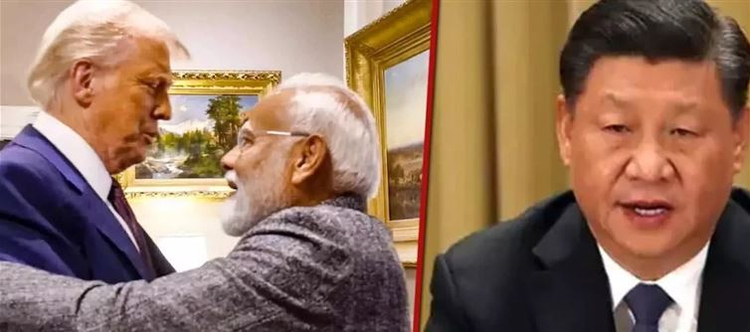
After trump announced a 90-day halt and reduced the reciprocal duty to 10% for everyone, except china, the EU is expected to back off from its proposed 25% counter-tariff against the US. Trump telling investors that "now is a great time to buy" just hours before he hit the pause button, which caused the markets to rise, is a different story. china can fight back because it has built itself into a powerhouse of manufacturing, technology, and exports.
Trade war-proofed
After trump 1.0 began the first trade war against it in 2018, Bloomberg's David Fickling says, "The world's biggest manufacturer has spent decades building an economy that's already largely war-proofed against blowback from its own trade practices."
Since then, the US's share of exports to china has decreased by 6.6 percentage points to 17.2 percent, while China's share of US imports has increased by 4 percentage points to 18.5%.
According to Fickling, the US is a very small exporter to china, with the exception of jet engines and, to a lesser extent, soy. china also leads US imports in every category, including computers, smartphones, gaming consoles, furniture, toys, and apparel.
Less to lose
Therefore, American consumers who have experienced four years of high inflation and two decades of high interest rates will be negatively impacted by higher tariffs against China; American producers who are currently experiencing the third year of producer price deflation will be negatively impacted by China's retaliatory tariff.
Fickling points out that, in contrast to the US, china has established relationships with other trading countries in order to diversify and expand its export markets.
Others have pointed out that in order to lessen its reliance on the US, china, a significant consumer of US agricultural products, expanded its own production of soy, corn, cattle, pig, wheat, sorghum, and other crops while diversifying its imports from Brazil.
According to US data, the country's trade imbalance with china is still quite high at $295 billion in 2024, despite having decreased from $375 billion in 2017 and $418 billion in 2018.
The RCEP Shield
The 10 ASEAN states and their free trade agreement (FTA) partners, such as Japan, Korea, Australia, and New Zealand, make up the largest commercial bloc, the Regional Comprehensive Economic Partnership (RCEP), which is led by China. This bloc accounts for 30% of world GDP and 28.8% of global trade.
In order to circumvent trade restrictions and the China+1 policy, it established manufacturing facilities in mexico and other Latin American nations to gain access to the US market after 2018, and in Turkiye, Nigeria, and morocco to gain access to the european markets (Economic survey 2023-24).
In order to gain access to the indian market, it is currently doing so in Vietnam. Last month, it struck nine technical and economic agreements with Bangladesh. As a major consequence of Trump's tariff battle, it is understandable that india is concerned about the dumping of Chinese goods.
India remains vulnerable
Ironically, china and india began their economic reform journey together in the 1980s. The two started at virtually the same levels in size, per-capita income, and inequality.
But today, china is the number one in
(a) manufacturing (global share of 28.8 per cent against India's 2.8 per cent in 2023
(b) exports of goods (global share of 14 per cent against India's 1.8 per cent in 2023)
(c) emerging high-tech (leads the world in 37 of 44 technologies in defence, space, robotics, semiconductors, renewable energy, biotechnology, AI, quantum technology, etc.) and science
China's GDP, at $17.75 trillion, is five times India's $3.57 trillion (current USD) in 2023. Despite additional (recent) sops such as corporate tax cut and PLI subsidies, India's manufacturing remains flat at 17.2 per cent of GVA in FY25, as it was in FY14. Goods exports fell to 17 per cent of GDP in FY23 (up to which NAS data is available), from 17 per cent in FY14.




 click and follow Indiaherald WhatsApp channel
click and follow Indiaherald WhatsApp channel